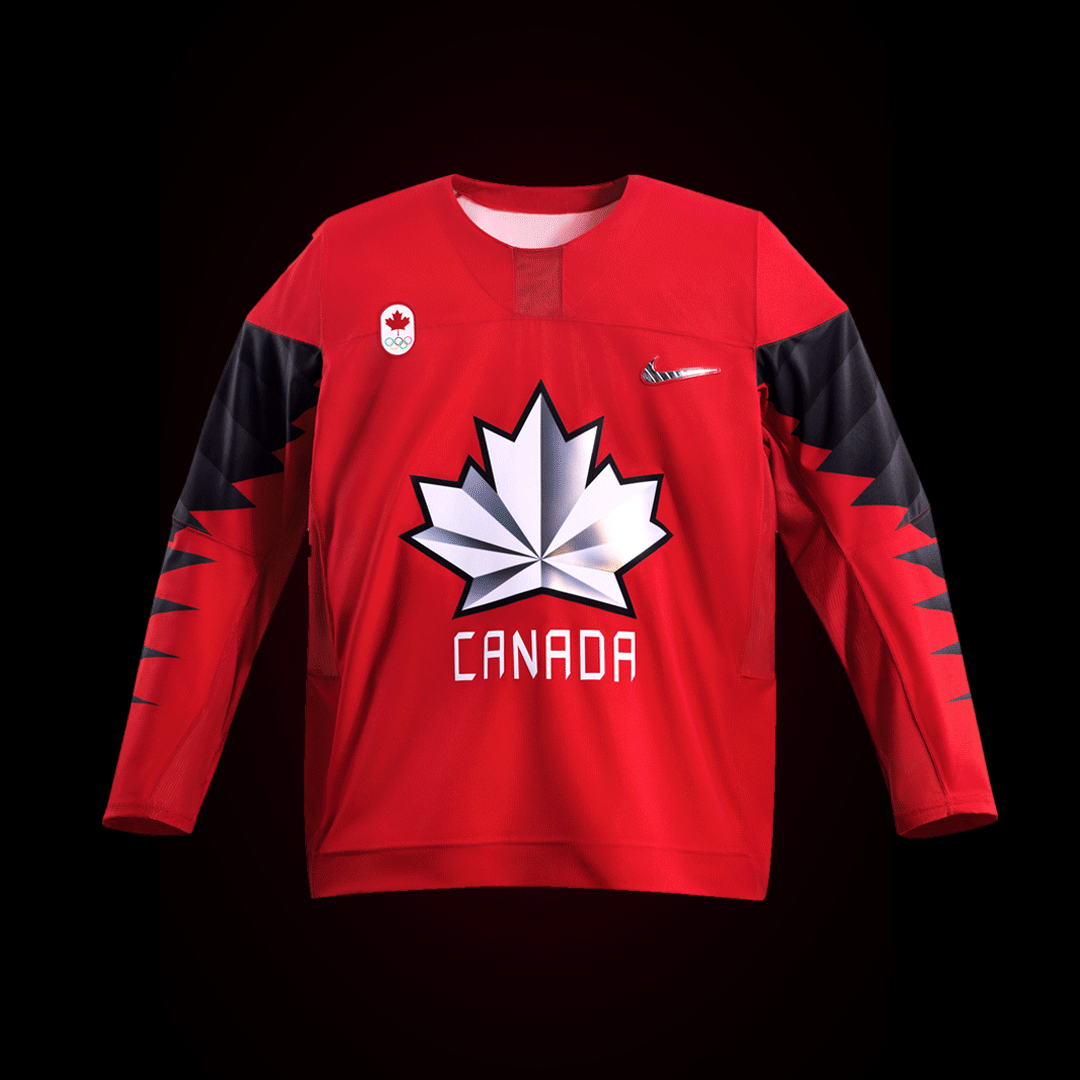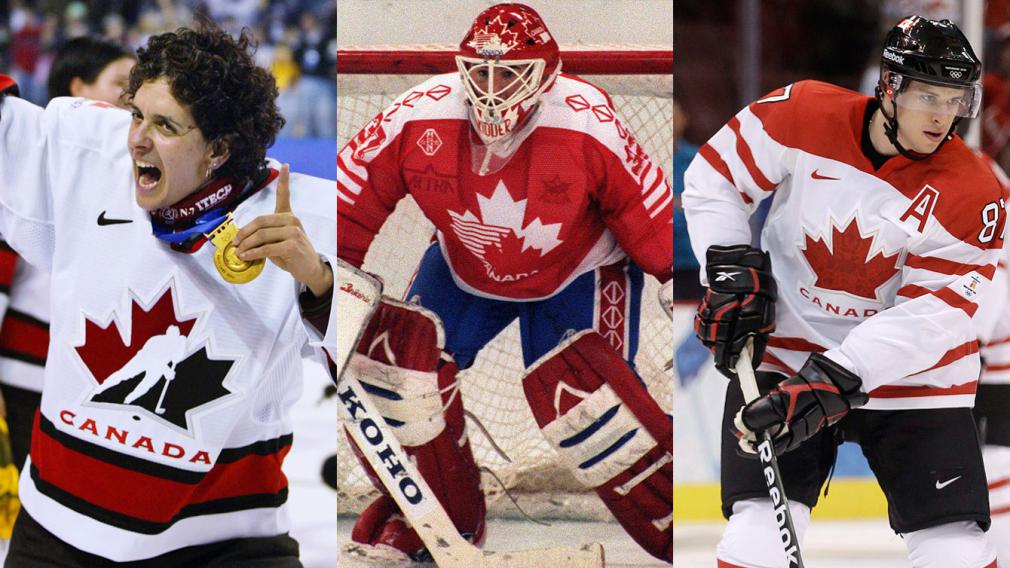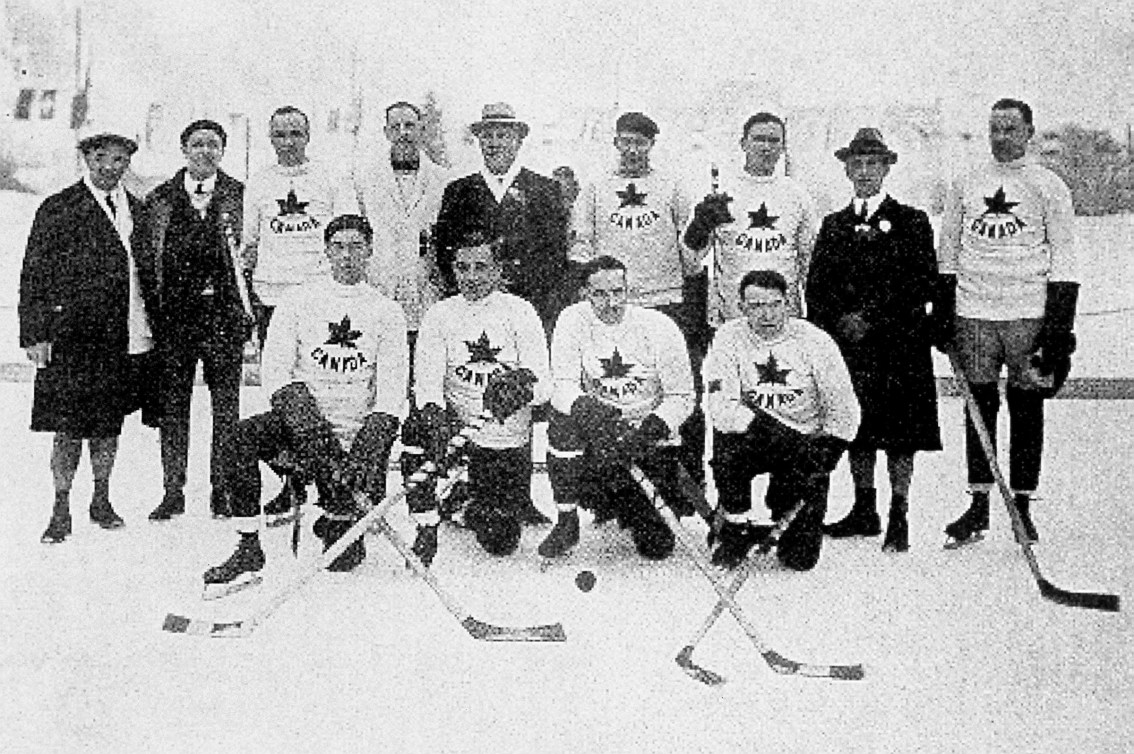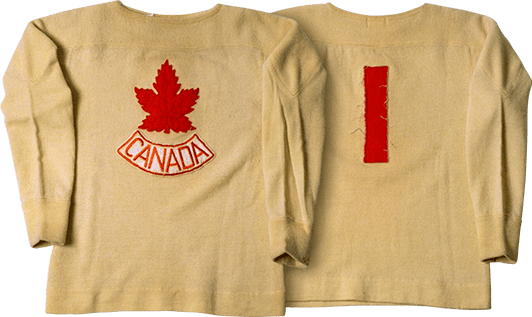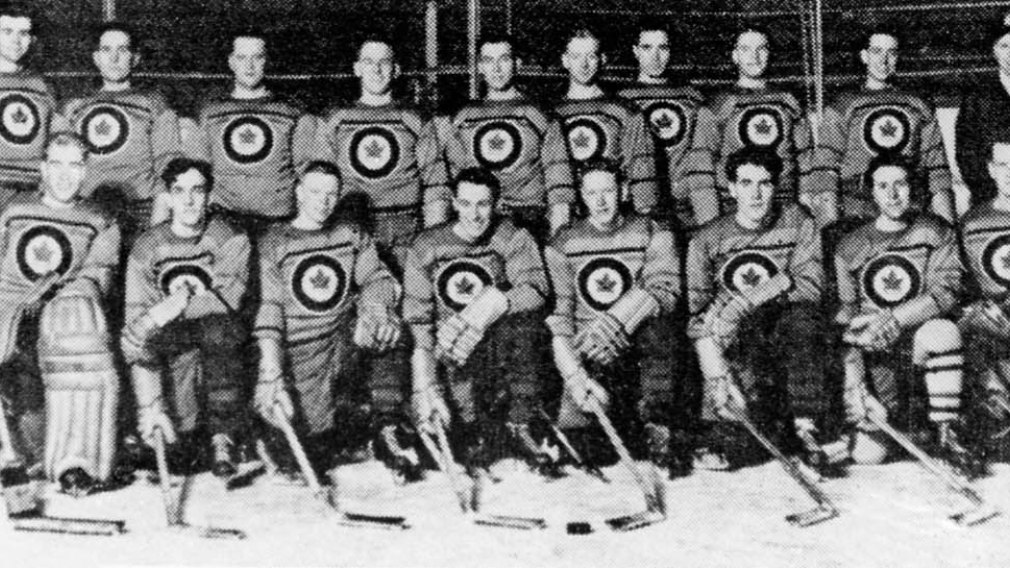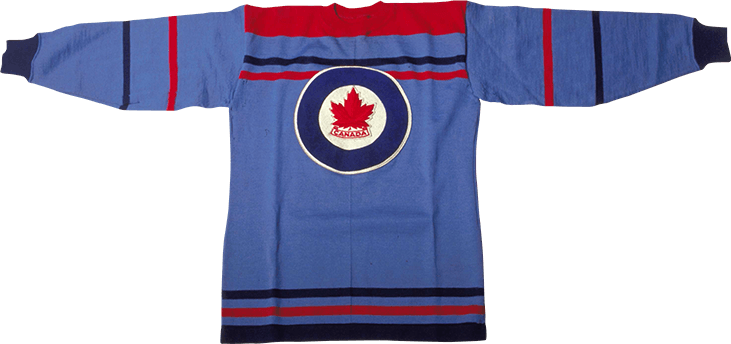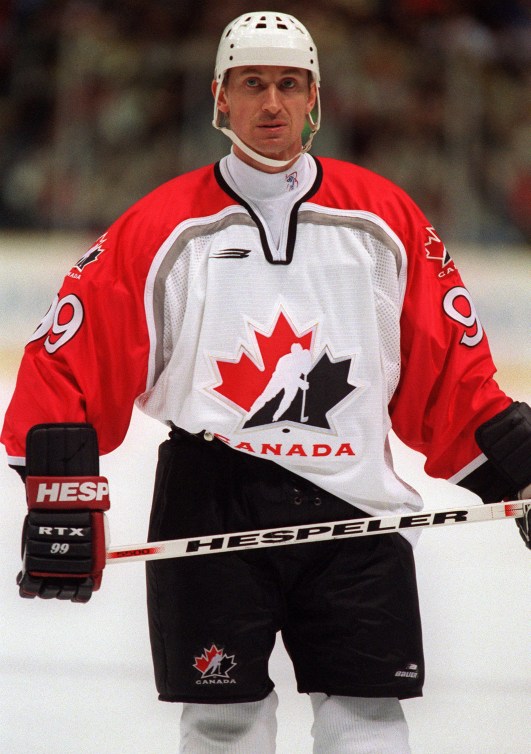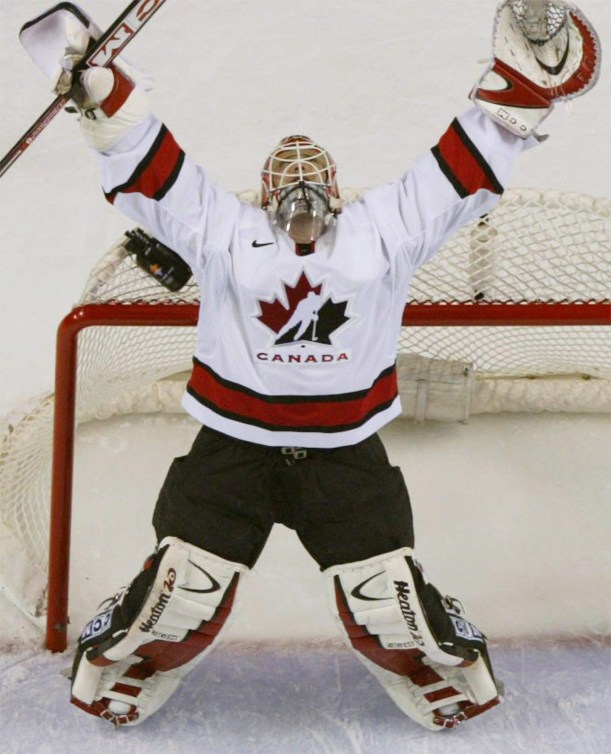Team Canada’s Most Iconic Hockey Jerseys
Since ice hockey was first part of the Olympic Games at Antwerp 1920, Canada has won more medals in the sport than any other country — 22, including 13 gold.
Almost as memorable as the moments that led to those medals are the jerseys that Canadian players have worn over the now more than 100-year history of Olympic ice hockey.
Let’s talk walk through the fashionable (and sometimes not so fashionable) past:
The OG
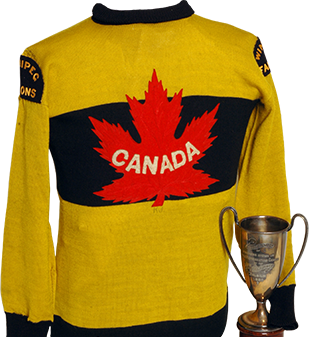
Canada certainly did not go unnoticed in its first outing on Olympic ice at Antwerp 1920, winning gold in this mustard yellow wool sweater. This choice of color may seem surprising, but Canada had not yet adopted its current red and white flag. Also, in the early days of Olympic hockey it was a club that represented the country, not a national team, explaining why we see the Winnipeg Falcons logo on the shoulders.
The Classic
Less is more and apparently it played quite well for Canada at the first official Olympic Winter Games at Chamonix 1924. Ending the tournament with an incredible 110 goals and only three against, Canada was not only seen as the best hockey nation in the world but also set the tone for many years of wearing similar jersey designs at the Games.
The Blue, White and Red
New era, new team, new look. At the first Olympic Winter Games following the Second World War, Canada was represented at St. Moritz 1948 by the RCAF Flyers. So it’s not surprising that the blue, white and red of the Royal Canadian Air Force was prominent as Canada returned to the top of the Olympic hockey podium for the first time in 16 years.
The Cursed

Believe it or not, there was a stretch when Canada did not win Olympic hockey medals. After not sending teams to Sapporo 1972 or Innsbruck 1976 to protest the Soviet Union and Czechoslovakia’s use of players who were amateur in name only, Canada would not reach the podium at Lake Placid 1980, Sarajevo 1984 or Calgary 1988, wearing the above jersey at the latter two tournaments. Could that be why this design hasn’t been seen again?
The Over-the-Top
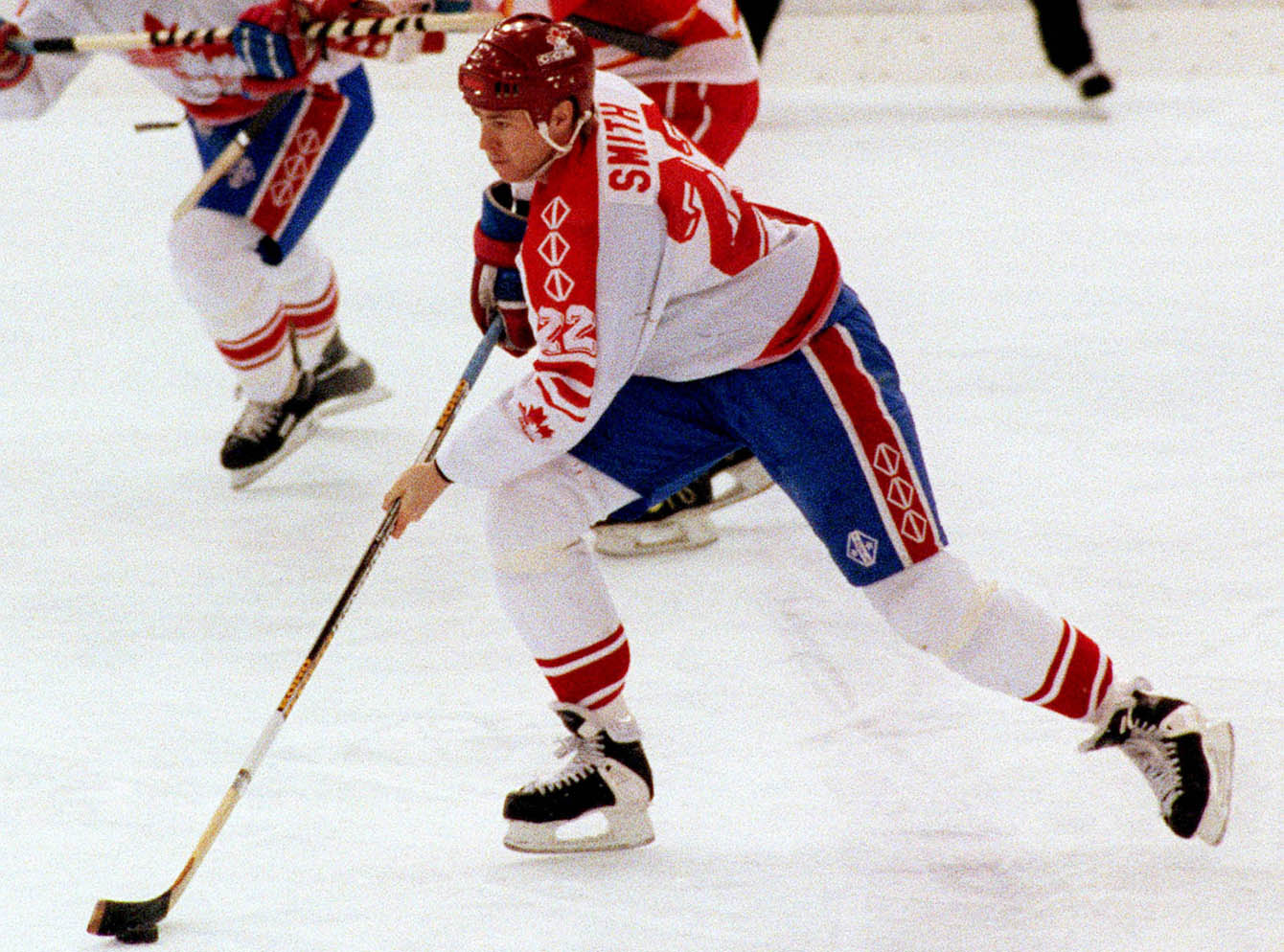
Fifteen. That is the number of times the logo of the company that made the uniforms for Albertville 1992 is found on each jersey. But hey, it was also what Canada wore while winning silver, our first Olympic hockey medal in 24 years.
The Good Old Days
READ: Four Olympic hockey champs tell you why the jersey matters
In the mid-1990s, Hockey Canada introduced this now-familiar red, white and black logo on all of its national team jerseys and it was worn by some of the most iconic Canadian hockey players of all time. Patrick Roy, Ray Bourque and Wayne Gretzky will forever be remembered wearing this uniform at Nagano 1998 when NHL players competed at the Olympics for the first time. It was also the logo worn when Canada won men’s and women’s gold at Salt Lake City 2002 and when the women repeated as Olympic champions at Turin 2006.
The Iconic
READ: Hockey Canada Unveils Team Canada’s 2010 Olympic and Paralympic Jersey

For the home Games of Vancouver 2010, we saw the same good old red and white look of Canada but with a touch of modernity and First Nations influence. The maple leaf design incorporated two important symbols — the thunderbird and the eagle — by Musqueam artists Debra Sparrow. We have to give special mention to the golden band that surrounds the maple leaf as Canada made its intentions clear to opposing countries.
The High-Tech
READ: Hockey Canada jersey for Sochi 2014 – an evolution
Made from 73% recycled polyester and 15% lighter than the 2010 jersey, the Sochi 2014 jerseys are the most environmentally friendly and technologically advanced on this list. These designs, besides being beautiful, are also full of meaning. For example, inside the neck of each of these shirts are 12 golden maple leaves representing the number of gold medals won by Canada in Olympic and Paralympic hockey (8 men, 3 women, 1 sledge) to that point. They added two medals to this haul by winning the men’s and women’s tournaments at Sochi 2014.
The Most Recent
For PyeongChang 2018, there were again three options: white with a red maple leaf and red sleeve details, red with a white and grey maple leaf and black sleeve details, and black with a red maple leaf and red sleeve details. The multipanel, three-dimensional design of the maple leaf was inspired by a skate blade.
